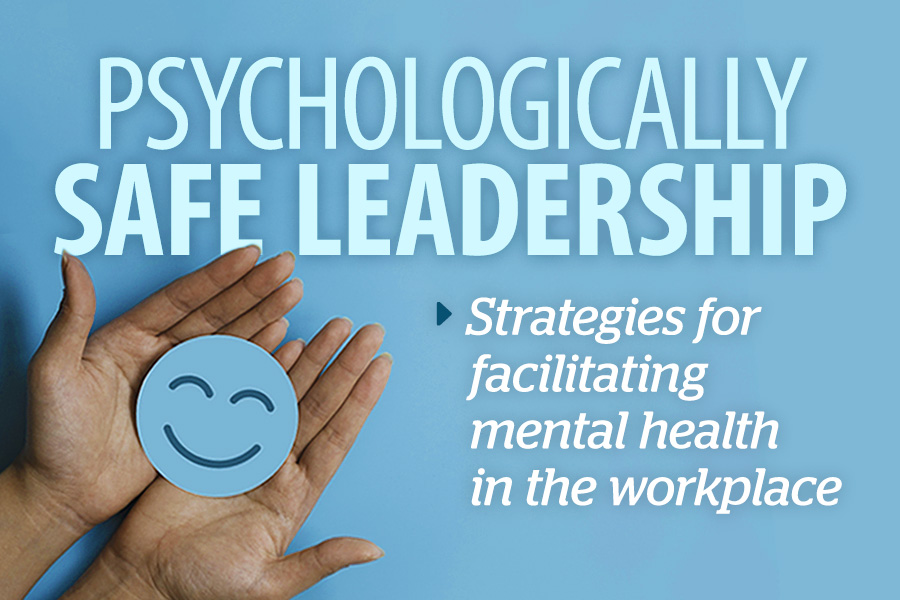
Workplace mental health requires psychologically safe leaders
By Bill Howatt and Troy Winters
New mini-series will explore practical microskills for work leaders
EDITOR’S NOTE: ‘Psychologically Safe Leadership: Strategies for facilitating mental health in the workplace’ is a web series in partnership with Dr. Bill Howatt of Howatt HR Consulting in Ottawa, and Troy Winters, senior health and safety officer at the Canadian Union of Public Employees (CUPE) in Ottawa.
The COVID-19 pandemic has caused many employers to focus on their employees’ mental health.
An Ipsos poll reports that nine out of 10 leaders (managers and supervisors) want to do better for their workers by improving their own emotional intelligence, and 85 per cent agree that it would be a good use of their time to build skills to better respond to emotionally distressed workers.
Additionally, many leaders, regardless of their position, recognize that becoming psychologically safe leaders will make them more valuable to their organization.
The fallout of the pandemic on workplace mental health will not be fully understood for years. For example, COVID-19 has shone a light on the psychosocial factor of isolation and how working remotely has increased employees’ risk of loneliness.
“Becoming a psychologically safe leader is not intuitive; it requires professional development, feedback and coaching.” – Dr. Bill Howatt
Kniffin and a group of researchers from around the world anticipate changes in work practices (for example: working from home) and for workers (for example: social distancing and loneliness).
How employees cope with the changes in how work is organized and its impact on their stress levels and mental health will require additional monitoring and research to be fully understood.
Whether employees are working in a building, remotely, or in a hybrid model of remote and on-site work, how well they cope with the new circumstances and workplace psychosocial factors and hazards will fall to their direct managers.
The Canadian Standards Association’s CSA-Z1003-13 National Standard: Psychological Health and Safety in the Workplace describes its vision for a psychologically healthy and safe workplace as “one that actively works to prevent harm to workers’ psychological health, including in negligent, reckless, or intentional ways, and promotes psychological well-being.”
One key imperative that the standard highlights is the importance of ensuring leaders have the training and skills to facilitate psychological safety by creating the right climate, mindsets, and behaviours within their teams. Leaders need to identify and remove hazards in the workplace while simultaneously supporting their team to help build resiliency.
Google played a significant role in promoting the value of psychologically safe leaders when they promoted: “Psychological safety question: Can we take risks on this team without feeling insecure or embarrassed?”
Amy Edmondson, who coined the term psychological safety in the workplace in 1999, suggests, “Psychological safety at work takes effort. It’s not the norm. But it’s worth the effort.”
Psychologically Safe Workplace Awards provide employers tools, data on mental health
Psychologically safe leaders’ microskills framework
This series will provide guidance to human resources and occupational health and safety leaders on the kinds of microskills that can help them develop their leadership skills aligned to those of a psychologically safe leader.
Microskills that will be packaged for this series will fall under one of four headings:
- Emotion: To support employees’ emotional well-being in the workplace, leaders need to know how to provide guidance and understand how their own behaviour can directly impact employees’ experience.
- Inclusiveness: Because inclusion is a core factor of a psychologically safe workplace, leaders must be clear on what they can do to make all employees feel included.
- Conflict: Leaders must know how to effectively deal with unpleasant emotions and anticipate conflict before it happens.
- Relationships: The foundation for a trusting and psychologically safe relationship with employees is the degree that a leader understands how to create such a connection.
Mini-series application
This mini-series will introduce practical microskills for psychologically safe leaders — managers and supervisors who create an employee experience where all employees feel welcomed, are free from fear, believe their ideas are valued, and feel included.
The motivation of this editorial series is to provide leaders with guidance towards the microskills they can focus on and practice to become more psychologically safe leaders — so that they can create psychologically safe workplaces.
Each article will introduce one topic and discuss the microskill(s) from one of the above categories, with the hope that human resources and occupational health and safety leaders will share this series with their teams to put leaders on track to psychologically safe leadership.
Readers will be provided with the ideas for the knowledge and skills, setting the expectation that being psychologically safe leaders makes good business sense.
 Dr. Bill Howatt is the Ottawa-based president of Howatt HR Consulting in Ottawa.
Dr. Bill Howatt is the Ottawa-based president of Howatt HR Consulting in Ottawa.

Troy Winters is a senior health and safety officer at the Canadian Union of Public Employees (CUPE) in Ottawa.
